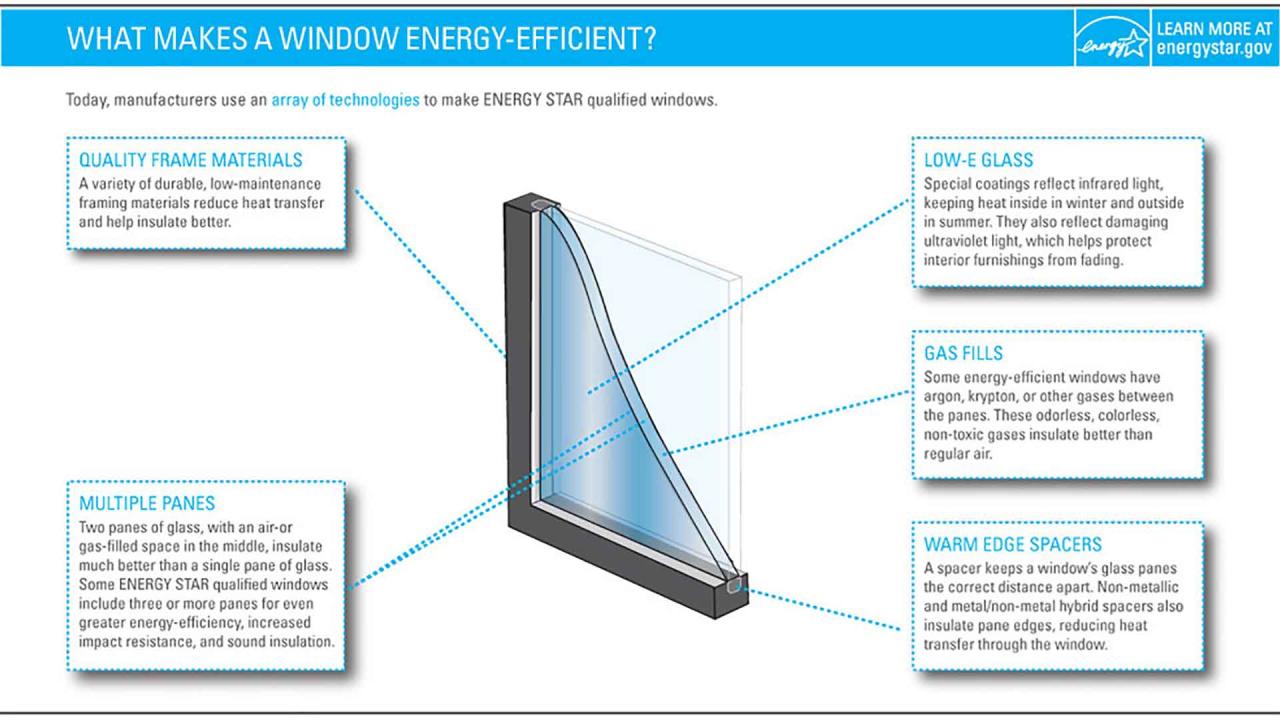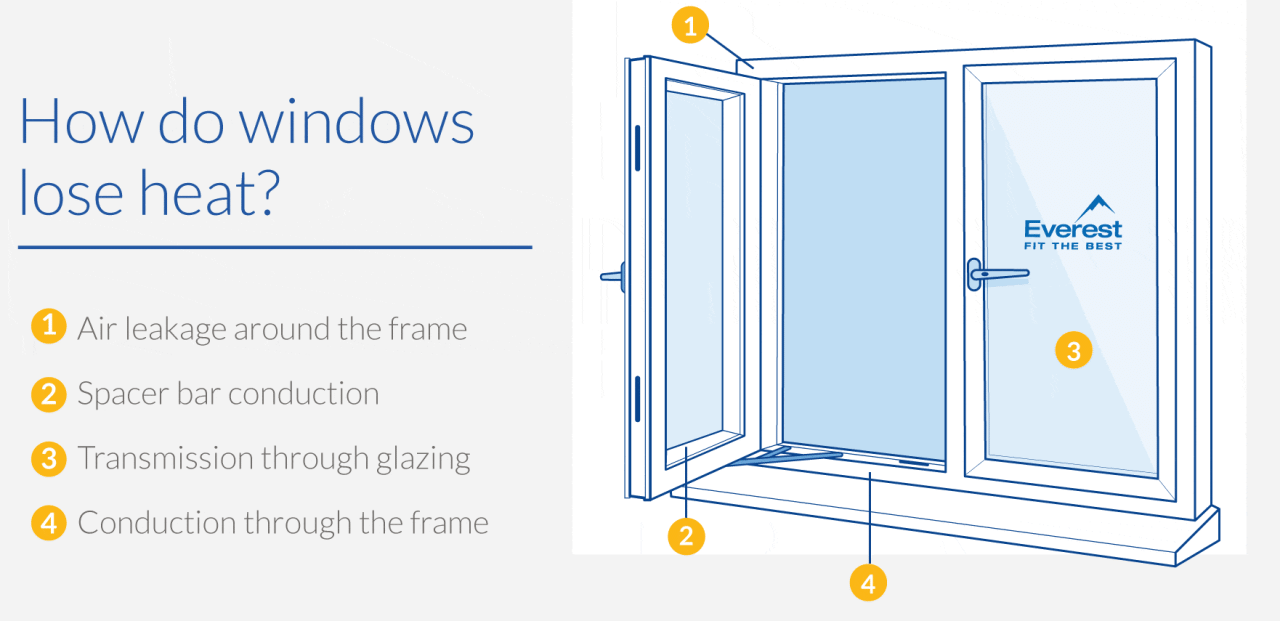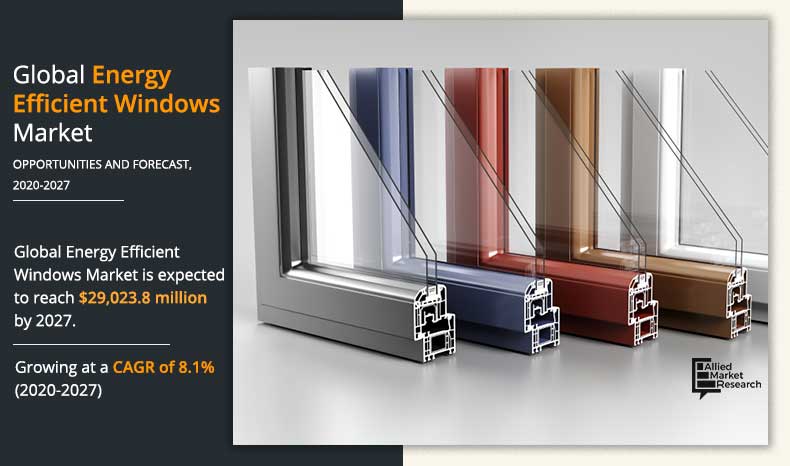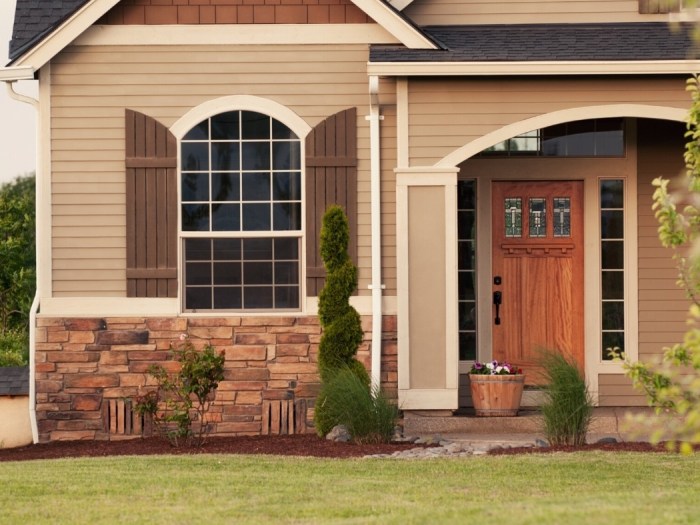How to Choose the Best Windows for Energy Efficiency in 2025: A Comprehensive Guide
Exploring the realm of energy-efficient windows in 2025, this introduction sets the stage for an informative and engaging discussion. Dive into the world of window technology and discover how to make the best choices for energy efficiency.
In the following paragraphs, we will delve into the factors, types, innovations, and considerations surrounding energy-efficient windows, providing valuable insights for your next window upgrade.
Factors affecting energy efficiency in windows

Energy efficiency in windows is influenced by various factors that can impact the overall performance of a building. Understanding these factors is crucial when selecting windows to maximize energy savings.
1. Window Material
The material used in the construction of windows plays a significant role in energy efficiency. Different materials have varying levels of insulation properties, affecting heat transfer and air leakage.
- For example, double-pane windows with low-emissivity coatings can reduce heat loss in winter and minimize heat gain in summer.
- Fiberglass frames are known for their durability and low thermal conductivity, enhancing energy efficiency.
2. Window Design
The design of windows, including the number of panes, size, and orientation, can impact their energy efficiency. Properly designed windows can maximize natural light while minimizing heat loss or gain.
- Triple-pane windows offer superior insulation compared to single-pane windows, reducing energy consumption for heating and cooling.
- South-facing windows are ideal for passive solar heating, utilizing sunlight to warm the interior space during winter.
3. Sealing and Installation
The quality of installation and sealing around windows is crucial for preventing air leakage and maintaining energy efficiency. Poor installation can lead to drafts, resulting in energy waste.
- Proper weatherstripping and caulking can seal any gaps or cracks around windows, improving insulation and reducing energy loss.
- Professional installation ensures a tight fit and proper alignment, eliminating air leaks and optimizing energy performance.
4. Energy-efficient Glazing
The type of glazing or glass used in windows can impact their energy efficiency by controlling heat transfer and UV radiation. Low-emissivity coatings and gas fills between panes can enhance insulation properties.
- Argon or krypton gas-filled windows provide better thermal insulation compared to air-filled windows, reducing heat transfer through the glass.
- Low-e glass reflects infrared light, keeping indoor spaces cooler in summer and warmer in winter, contributing to energy savings.
5. Energy Ratings and Certifications
Considering energy ratings and certifications, such as ENERGY STAR, can help homeowners identify windows that meet specific energy efficiency standards. These ratings provide valuable information on the performance of windows in different climates.
- ENERGY STAR certified windows are independently tested and verified to meet stringent criteria for energy efficiency, helping consumers make informed decisions.
- Choosing windows with high energy performance ratings can result in lower utility bills and a reduced carbon footprint, promoting sustainability.
Types of energy-efficient windows
When it comes to choosing energy-efficient windows for your home or building, there are several types available in the market. Each type comes with its own set of benefits and drawbacks, so it's essential to understand the differences to make an informed decision.
Double-Pane Windows
Double-pane windows consist of two layers of glass with a space filled with gas in between. These windows are effective at reducing heat transfer and noise, making them a popular choice for energy efficiency.
- Benefits:
- Improved insulation
- Reduced energy costs
- Enhanced comfort
- Drawbacks:
- Higher initial cost
- Potential for condensation between panes
Real-life Example: A newly constructed eco-friendly home in the suburbs equipped with double-pane windows to maximize energy efficiency.
Triple-Pane Windows
Triple-pane windows have three layers of glass with two spaces filled with gas in between. These windows offer even better insulation and noise reduction compared to double-pane windows.
- Benefits:
- Superior energy efficiency
- Enhanced soundproofing
- Increased home value
- Drawbacks:
- Higher cost than double-pane windows
- Potential weight concerns for installation
Real-life Example: A modern office building downtown upgraded to triple-pane windows to improve energy efficiency and reduce external noise pollution.
Low-E Coated Windows
Low-emissivity (Low-E) coated windows have a thin layer of metallic coating that reflects heat while allowing light to pass through. These windows help regulate indoor temperature and protect furniture from UV damage.
- Benefits:
- UV protection
- Reduced energy consumption
- Year-round comfort
- Drawbacks:
- May affect visibility or glare
- Initial cost may be higher
Real-life Example: A historic museum renovated with low-E coated windows to preserve artifacts from sun damage while improving energy efficiency.
Latest innovations in window technology for energy efficiency
In recent years, there have been significant advancements in window technology aimed at improving energy efficiency in buildings. These innovations not only help reduce energy consumption but also contribute to creating more sustainable and environmentally friendly structures.
Smart Glass Technology
Smart glass, also known as switchable glass, is a revolutionary technology that allows windows to change their properties based on external conditions. By using sensors or electrical currents, smart glass can adjust its transparency, tint, or insulation capabilities, thus optimizing natural light and heat gain.
This dynamic feature helps regulate indoor temperatures, reducing the need for artificial heating or cooling.
- Smart glass windows can automatically tint to block out excess sunlight, reducing glare and heat gain during hot days.
- During colder seasons, smart glass can switch to a more transparent state, allowing more sunlight to enter and warm up the interior spaces.
- Overall, smart glass technology helps maintain a comfortable indoor environment while minimizing energy consumption for heating and cooling.
Vacuum Glazing
Vacuum glazing is another cutting-edge technology that enhances the energy performance of windows by improving their insulation properties. This innovative design consists of two panes of glass separated by a vacuum gap, which significantly reduces heat transfer through the window.
- The vacuum gap acts as an excellent thermal insulator, preventing heat loss or gain through the window.
- Windows with vacuum glazing can achieve high levels of insulation, surpassing traditional double or triple glazing systems.
- By minimizing heat transfer, vacuum glazing helps maintain stable indoor temperatures and reduces the need for heating or cooling, leading to energy savings.
Examples of Advanced Window Products
Some companies have already introduced window products that incorporate these innovative technologies to improve energy efficiency in buildings. For example, XYZ Window Company offers a range of smart glass windows that can adapt to changing light conditions, reducing energy consumption throughout the year.
These advanced window products demonstrate the potential for significant energy savings in buildings by leveraging smart technologies for improved performance.
Overall, the latest innovations in window technology, such as smart glass and vacuum glazing, have the potential to revolutionize the way we design and construct energy-efficient buildings. By integrating these advanced technologies into windows, we can enhance comfort, reduce energy consumption, and create more sustainable built environments for the future.
Considerations for selecting energy-efficient windows in 2025

When choosing energy-efficient windows for your home in 2025, there are several key considerations to keep in mind to ensure maximum energy savings and comfort. From assessing the energy efficiency of windows to proper installation and maintenance, each step plays a crucial role in the overall performance of your windows.
Assessing Energy Efficiency
Before making a purchase, it is essential to assess the energy efficiency of windows. Here is a step-by-step guide to help you evaluate the energy-saving potential:
- Check for the U-factor and Solar Heat Gain Coefficient (SHGC) ratings to determine the windows' insulation and heat gain properties.
- Look for Energy Star certification or other industry standards to ensure the windows meet energy efficiency guidelines.
- Consider the window frame material and glazing options for better thermal performance.
- Evaluate the design features such as low-E coatings and gas fills for enhanced energy efficiency.
Importance of Installation and Maintenance
Proper installation and regular maintenance are crucial for maximizing the energy-saving potential of windows. Improper installation can lead to air leaks and reduced efficiency, while neglecting maintenance can impact the windows' performance over time.
- Ensure that windows are installed correctly to prevent air infiltration and heat loss.
- Seal any gaps or cracks around the window frames to improve insulation.
- Regularly clean and inspect windows to identify any issues early and address them promptly.
- Consider professional maintenance services to keep your windows in top condition for optimal energy efficiency.
Selecting Windows for Specific Climate Conditions
Choosing windows that align with specific climate conditions is essential for optimal energy efficiency. Here are some tips to help you select the right windows based on your region:
- For cold climates, opt for windows with low U-factor ratings and multiple glazing layers to prevent heat loss.
- In hot climates, choose windows with low SHGC ratings to minimize heat gain while still allowing natural light.
- Consider climate-specific features like insulated frames or tinted glass to enhance energy efficiency in extreme weather conditions.
- Consult with local experts or energy efficiency professionals to determine the best window options for your climate zone.
Conclusive Thoughts

As we conclude our exploration of how to choose the best windows for energy efficiency in 2025, remember that the right windows can make a significant impact on your energy savings and overall comfort. Make informed decisions based on the factors discussed to create a more energy-efficient environment for years to come.
FAQ Insights
What are the key factors that affect energy efficiency in windows?
The key factors include materials used, insulation properties, window orientation, and glazing types.
What types of energy-efficient windows are available in the market?
Common types include double-pane, triple-pane, low-emissivity (low-e), and gas-filled windows.
How do recent innovations like smart glass improve window energy efficiency?
Smart glass can adjust its tint based on sunlight exposure, reducing heat gain and enhancing energy efficiency.
What should individuals consider when selecting energy-efficient windows?
Consider factors like climate, U-factor, solar heat gain coefficient, and proper installation for optimal energy efficiency.




